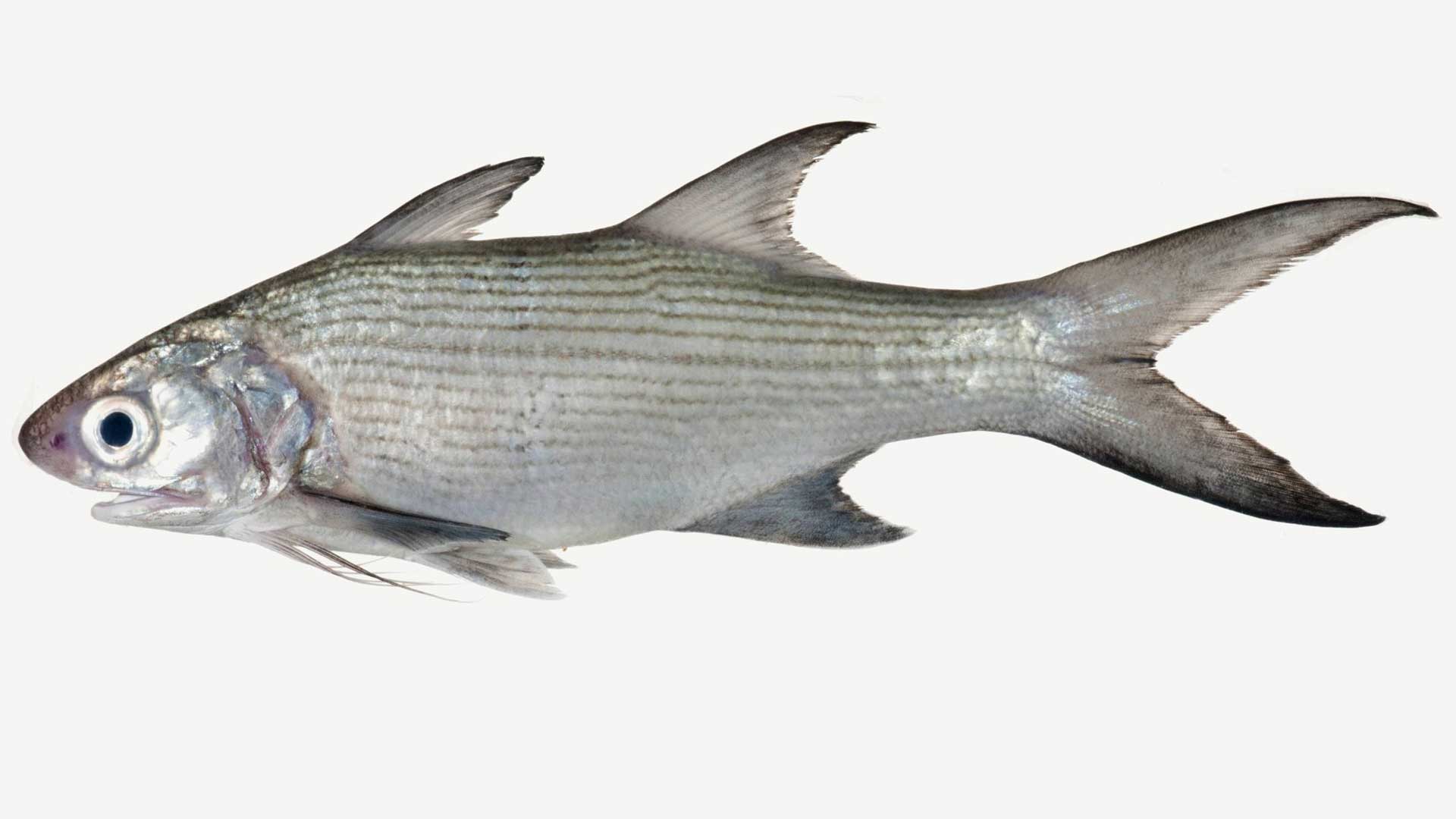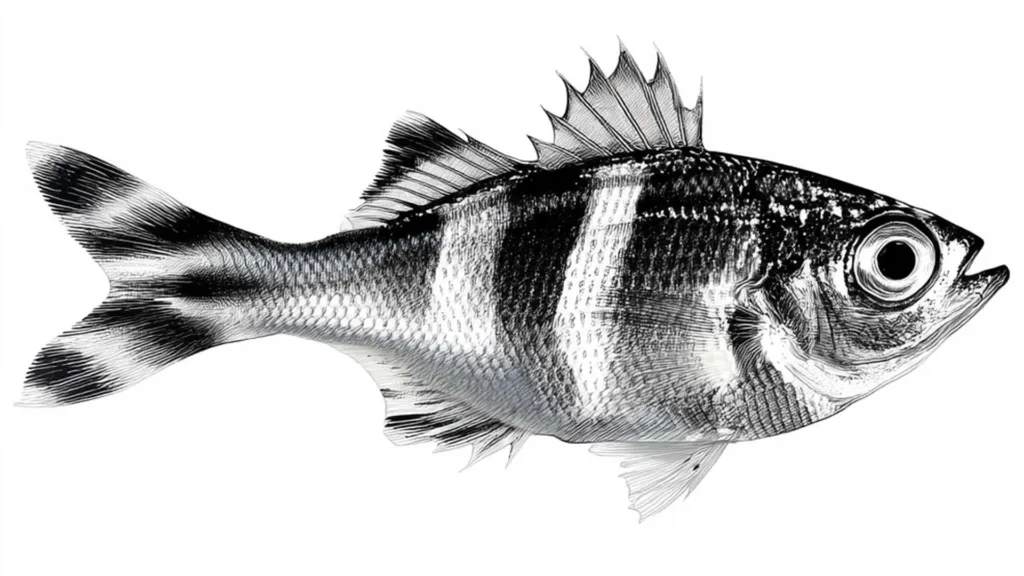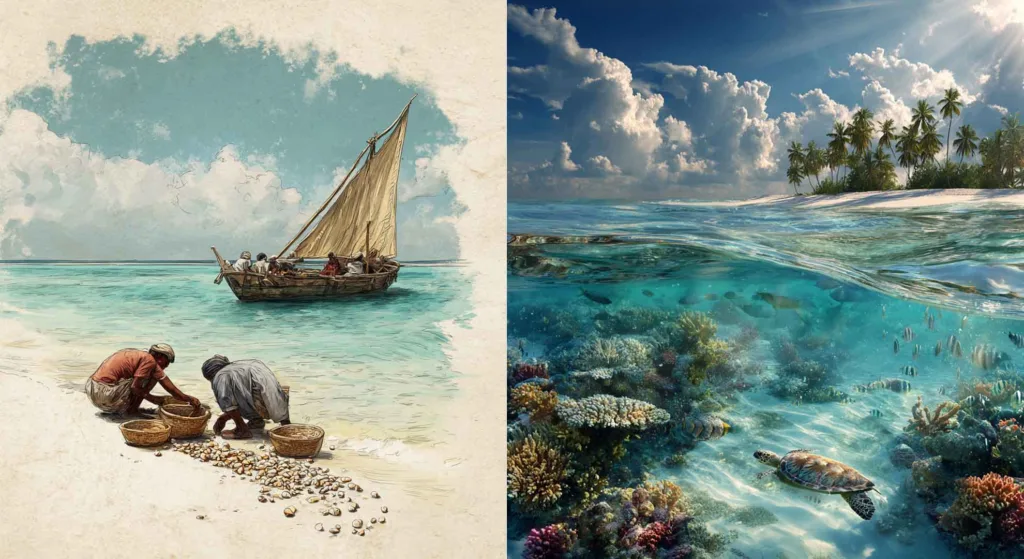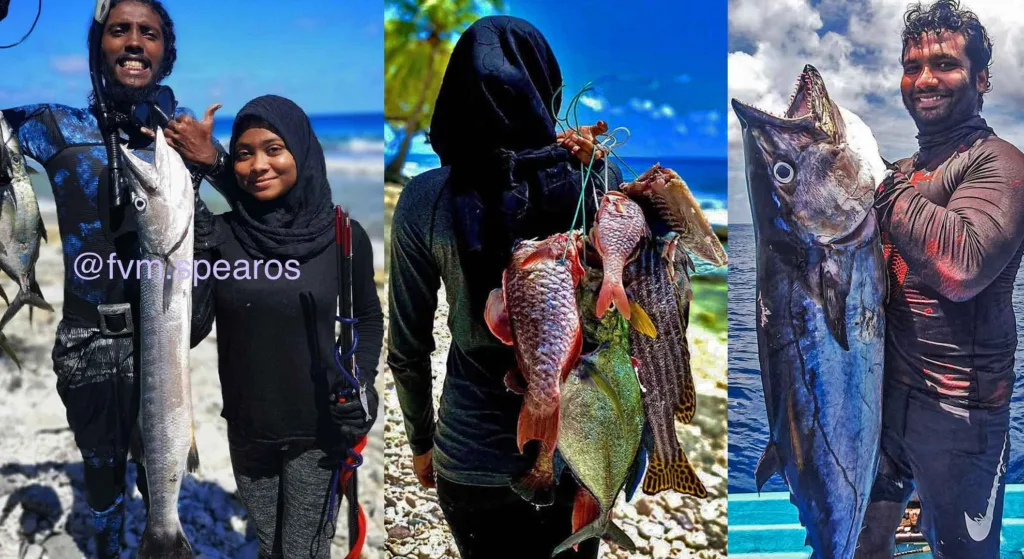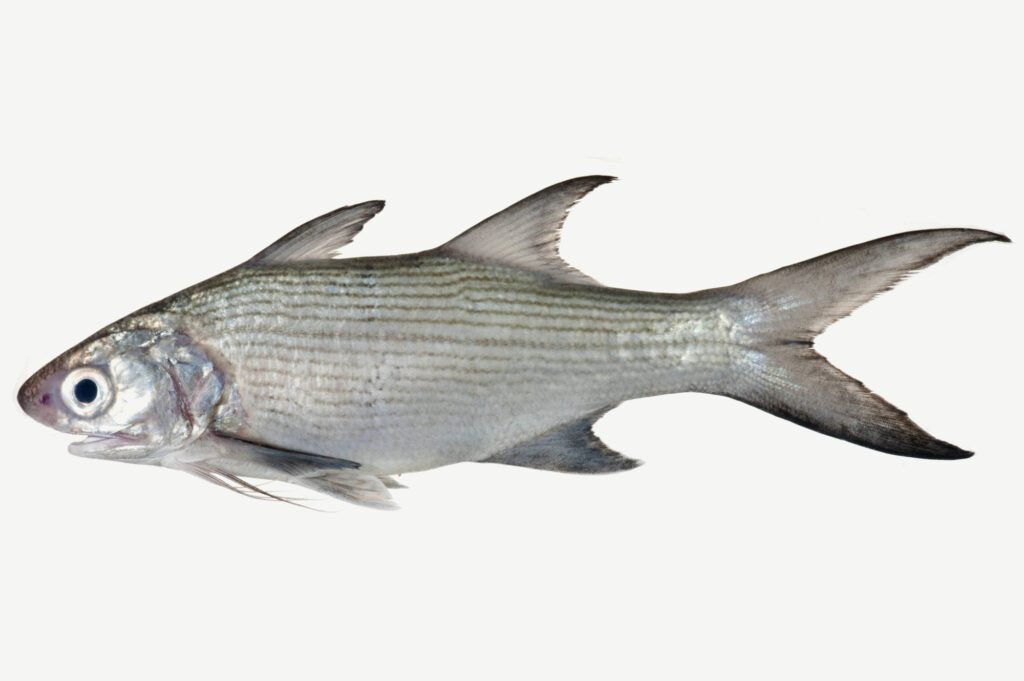
One day in 2011, I hurried to reach the harbor of our island, Fuvahmulah. It was a beautiful day on my island, Fuvahmulah. I went to the harbor with my best friend Mohamed Shujau (Mod) to see whether there were any reef fish there. We ascended the massive boulders that constitute the harbor’s protective barrier.
It was high tide. Waves pound the rocks’ edges. When we arrived, we found two other buddies fishing for blue-spotted dart fish. They reported multiple cuts in their fishing line and the presence of bluefin trevally on the reef.
I went with Mod to get thirty lbs. of monofilament from a nearby shop and swirled it around a large cooking oil plastic bottle. I wound 90 meters of monofilament. I also purchased standard hooks, possibly a size 13 or 14.
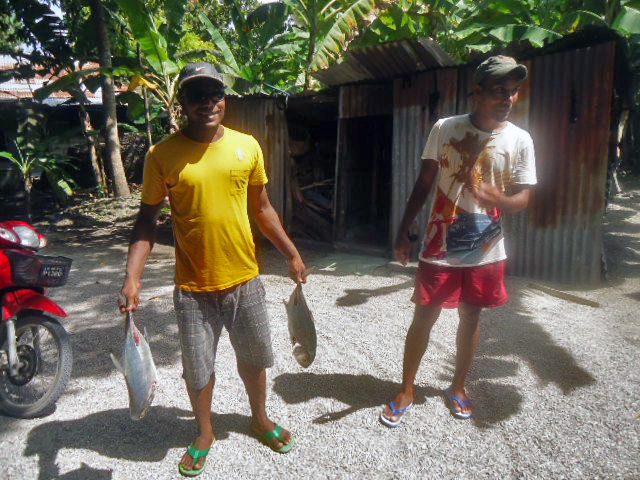
There was plenty of fish waste on the market. I immediately removed a tuna’s spleen, stomach, and intestine as bait. I rigged the intestine first, followed by the other two organs, because the intestine and stomach wouldn’t last long on the hook when submerged in water, but the intestine would.
I cast the line, letting the current and waves carry the bait to the center of the reef. Strikes on the bait were imminent. I landed two bluefin trevallies. And then I noticed some other kind of fish near the rocks. So, while standing on a rock five feet above the reef’s water surface, I tossed the bait quite near to me.
There was a lot of sand on the bottom and inside the open gaps of the massive rocks. When the bait reached the bottom, there was a strong pull (‘long pull’) on the fishing line. I gently pulled on the line and then pulled it hard to hook the fish. The swallowing, or strike, on the bait differed from the trevally at that time. The later fish took in the bait and dragged the line, but it did not run like the trevally.
I pulled the line as quickly as I could. It was a six-finger threadfish. We call it Keylamaha. Similarly, I grabbed five keylamaha, around 18 inches long, that day in 15 minutes.
The most optimal time to fish for keylamaha is on evenings when the moon is full, according to Ahamadhubea, a mudhim (one who leads prayer and calls for azaan) at our district mosque. He said they baited their hooks with hermit crabs (baroala).
They rigged the hermit crab’s belly and wound the bait in fine threads. They usually go to the Thoondu beach area to catch these fish. Because Thoondu Beach is so vast, they often use very long poles ranging from 10 to 14 feet in length to land these fish.
Although these fish prefer sandy beaches, they also live in rocky areas. Rocks also make up the edge of our harbor. I saw that the water was rough and that waves were hitting the rocks all the time. And Keylamaha was enjoying the turbulence. Soft silicone lures can catch them since they eat crustaceans such as shrimp, crabs, and worms. They also consume other benthic invertebrates and tiny fish.
The reef flat next to the harbor area of Fuvahmulah is always rough. Huge waves typically batter the rock boulders in the harbor area. The area is a prime spot for big, giant trevallies. To land fish such as trevally, giant trevally, and even six-finger threadfin fish is difficult and dangerous.
Every time we hooked fish, we had to exercise several maneuvers to get the catch. We normally stand around five to 15 feet above the level of water in the reef. We had to descend to lower rocks to prevent entangling the fishing line on corals by facing the force of the waves and the thick white foam produced by the waves.
The fishing line quite often entangles in the corals. It is daunting and very risky. One day, a huge wave sent my friend Thambi and me into the large holes in the rocks. We both luckily survived when the wave subsided. But it is a thrilling adventure.
This very day I caught a good catch of trevally and six-finger threadfin fish.
